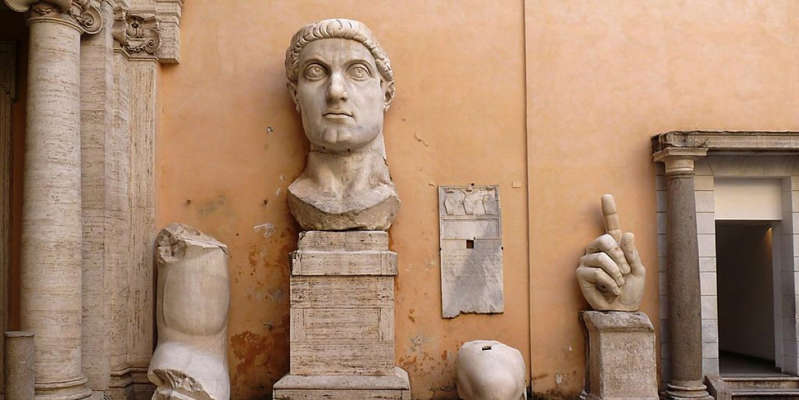
Brush from a bronze statue of the Roman emperor Constantine restored after 500 years
Italian and French experts have restored the brush of a bronze statue of the Roman emperor Constantine (272-337). It is exhibited for the first time in the Capitoline Museums of Rome. As the director of the complex of archaeological museums and historical and exhibition heritage Claudio Parisi Presicce told TASS, this became possible thanks to the provision of a phalanx of the index finger by the Louvre.
“The agreement concluded with the Louvre stipulates that the finger will be transferred to us for five years, this period may be extended. It is possible that the artifact will remain in Rome for many years. This is a huge gift, ”he said.
The fact that the bronze phalanx from the Louvre collection belongs to the hand of the statue of Constantine was confirmed in 2018. Scientists, using new technologies, have created a three-dimensional copy of a finger in Rome. The original remained in Paris.
“Attaching a finger is not a simple symbolic fact. The restoration of the hand allowed a new look at the hand and gesture of the emperor. With the attached finger, we understand better how the sphere was held in his hand, it was not clamped, but held as if on a support. And this is important for understanding the aesthetic side and abilities of the ancient masters, ”explained Presicce, adding that the finger is attached in such a way that it can be detached at any time without harming the fragments.
According to the specialist, modern archeology assumes that any restoration of an artifact should be invisible, while the possibility of returning to its original form should be preserved. The finger was first attached to the rest of the hand for an exhibition in France in 2019. Then the brush was delivered from Rome. “Perhaps it was that exchange that prompted the decision of the director of the Louvre, Jean-Luc Martinez, to unite hand and finger again, but this time in Rome and for a long time,” Presicce said.
The first mentions of fragments of a bronze imperial statue date back to the 12th century. The head that has survived to this day, as well as a hand with a sphere, were described in medieval chronicles. It is known that they were transferred to the Capitol Hill in 1471, when Pope Sixtus IV (1414-1484) granted part of the papal collection to the Roman people. From this moment, the Capitoline Museums begin their history.
Graphic sketches of the second half of the 16th century depict a brush without an index finger. The fragment was not known until the middle of the 19th century, when it appeared in the collection of the Marquis of Campana. In 1857, Giovanni Pietro Campana was accused of embezzlement. His collection was confiscated and sold. Some were acquired by Emperor Alexander II for the Hermitage. However, most of the exhibits were bought by Napoleon III and in 1863 transferred to the Louvre, where the bronze phalanx ended up. In France, for a long time, they did not suspect that it belonged to the brush of a bronze statue of the Roman emperor Constantine.

